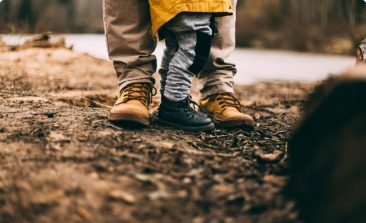Description
Disagreements among children are common; they are part of the process of learning how to get along. Fighting occurs when a disagreement becomes aggressive, such as by shouting or hitting. This is not uncommon in children who are still learning to control their emotions.
Children’s fights frequently begin when children perceive an unfair situation, attempt to assert what they believe to be their rights, believe that others do not see their point of view, or perceive the same situation in different ways. An older child, for example, may see it as a joke to tease a younger child, but the younger child may not like it.
Fighting can also occur between siblings when they compete for their parent’s attention or approval.
Disagreements, fights, and problem-solving: learning opportunities
Disagreements can provide an excellent opportunity for your children to practise the social skills they will need as adults. When disagreements lead to fighting, it can be an opportunity for children to learn other conflict resolution methods, especially if they learn that fighting does not get them what they want.
When disagreements among children are resolved fairly and without causing harm to anyone, children begin to develop problem-solving skills such as negotiating. They also learn the value of seeing things from another person’s perspective and respecting other people’s rights, feelings, and possessions.
As your children grow and develop better social skills, there will be less fighting.
How temperament influences child fighting
Children are born with their own temperaments, which govern how they react to and behave in the world. They could be adaptable or persistent, sociable or shy, for example. Children’s temperaments influence how likely they are to negotiate, argue, or avoid conflict.
Temperament may also explain why some people are more prone to rage than others, or why they are less able to control their rage. It’s not always easy for adults to resolve disagreements without resorting to bad behaviour; imagine how much more difficult it is for children.
How the environment affects children who fight
Children learn to differentiate between differences by observing and mimicking the behaviour they observe in their surroundings.
Children will learn to behave in this manner if they see you resolving your disagreements in a positive manner. This is known as modelling good behaviour. You can model behaviours such as:
Discussing compromises calmly when you disagree with someone remaining calm when you’re angry checking the facts before you act reacting in a situation-appropriate manner listening to other people’s points of view
Negative behaviour teaches children as well. When parents smack their children, the children are more likely to smack their brothers, sisters, friends, or even their parents. They’re also more likely to choose fighting if they see people being aggressive to each other all the time, especially their parents, older brothers and sisters, and friends.
Why children fight
Here are some reasons why children fight with each other.
- Changing Needs – Children’s needs, likes, and dislikes change as they grow. So the reasons for fights differ depending on age. A toddler will respond to someone touching their toy, while a teenager will respond to caring for their younger ones.
- Individual Nature and Temperament – Your child’s personality plays a big part in how they get along with others from the start. These include mood, outlook and adaptability.
- Sick Children or Children with Special Needs – Usually, children who have been ill for a long time or have special needs receive more attention from parents. This is one of the main reasons for the quarrel between the two children.
- Paradigms – The way parents resolve problems between two children creates in the minds of both children an image of the ideal path to fairness. They also see how their parents deal with problems and try to implement this in their daily lives.
You might also like
Parenting Updates: Subscribe Now!

ALL UPDATES
Go from pregnancy to adolescents with our email bulletins, loaded with reasonable, modern data about bringing up youngsters and taking care of yourself as a parent.
SUBSCRIBE NOW
MOVIE REVIEWS
Find the best motion pictures for your family with our youngster amicable surveys. Search new deliveries and more seasoned motion pictures by age, rating and type.
SUBSCRIBE NOW
MENTAL HEALTH RESOURCES
Is it safe to say that you are an expert working with families? Get data about kid, adolescent and parent psychological well-being and prosperity.
SUBSCRIBE NOW











































